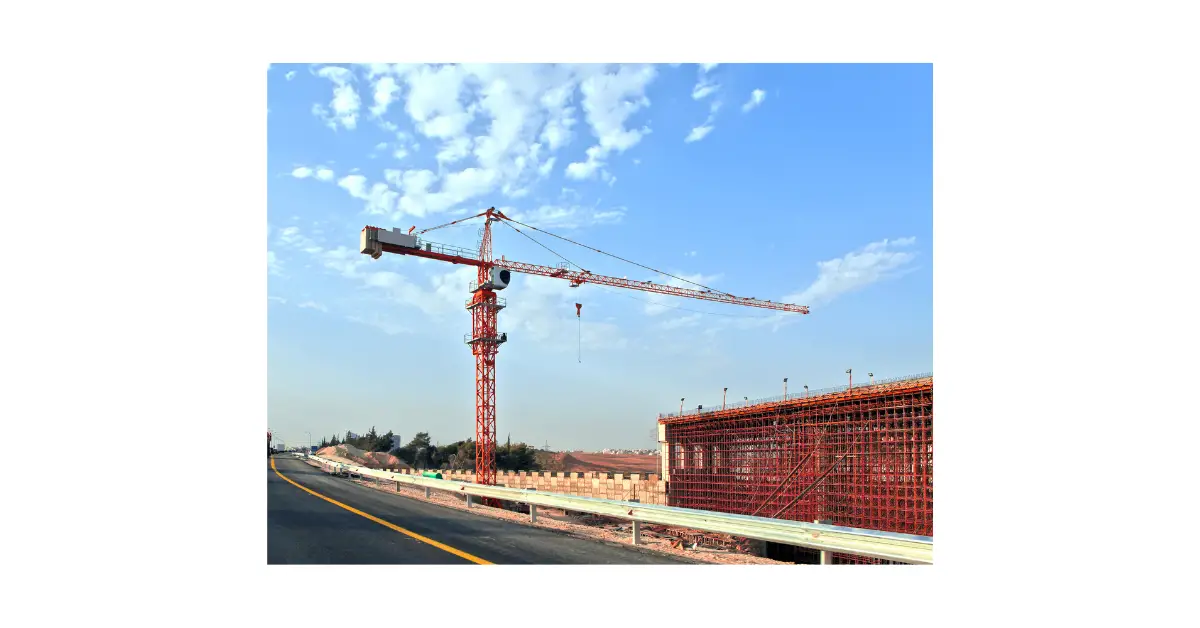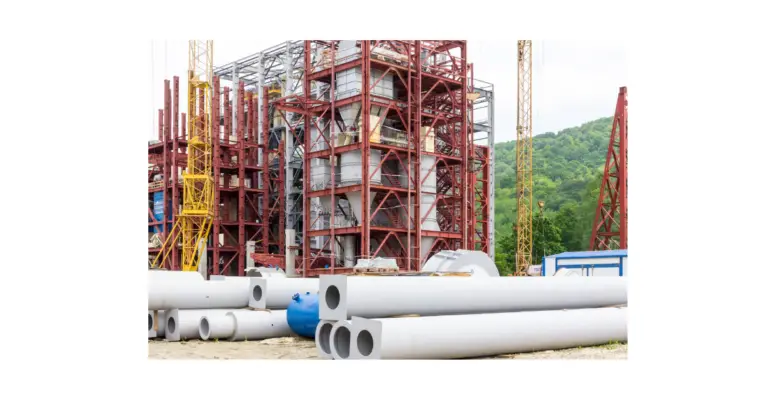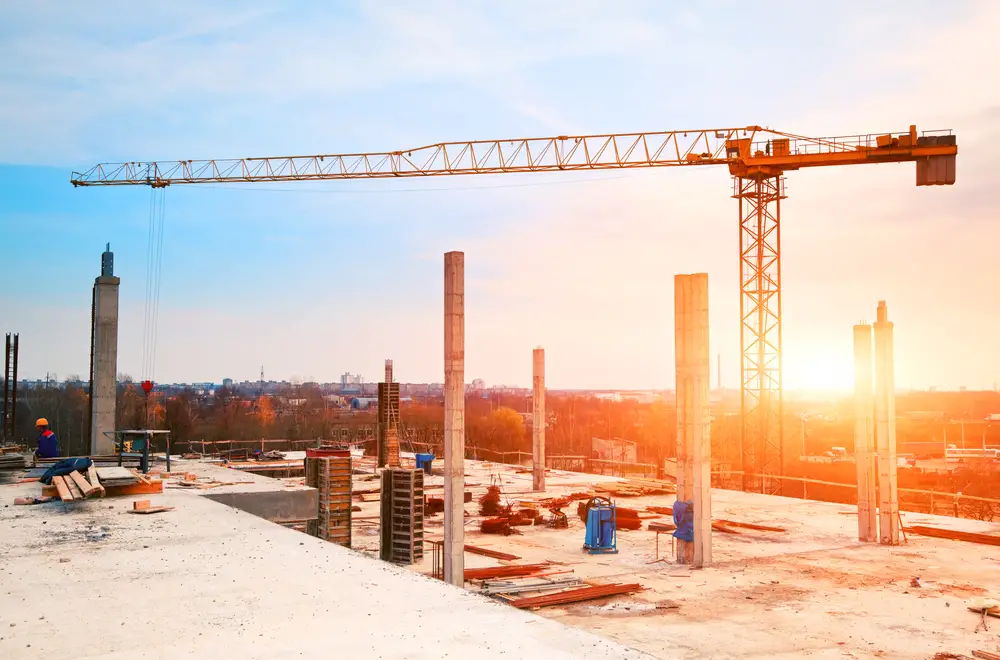Construction is a complex process that requires the use of many different tools. Some of these tools are more important than others, and knowing which ones are essential can make a big difference in the success of your construction project.
Construction equipment and supplies lists are provided to help install or repair the buildings in concrete and brick walls and floors. Each construction tool is used for the project’s success and must consider enterprise risk management fundamentals.
In addition, workers should take some precautionary measures and compass to prevent accidental accidents.
Here are the five most essential tools for construction projects to note.
Construction Tool #1: hammers
A good hammer is one of the most important tools on a construction site. They are versatile and can be used for everything from driving nails to demolition. When choosing a hammer, it’s important to select the right size and weight for the job. Otherwise, you risk doing more damage than good.
Construction Tool #2: saws
Saws are another essential tool for any construction project. They come in handy for large and small jobs, from cutting lumber to trimming doorways. Many types of saws are available, so it’s important to select the one best suited for the task at hand.
For example, a miter saw is ideal for precise cuts, while a circular saw is better for larger, more aggressive cuts and offers maximum security.
Construction Tool #3: levels
A level is essential for ensuring your construction project is level and plumb. This is especially important when working with walls and floors. Without a level, ensuring that your construction project was built to last would be difficult. Many different types of levels are available on the market, so it’s important to select one appropriate for the job at hand and the geometry of the compact check.
Construction Tool #4: tape measures
A tape measure is another essential tool for any construction project. It’s important to have a good quality tape measure that is accurate and easy to read. Otherwise, you risk making mistakes that could jeopardize the success of your project.
When selecting a tape measure, it’s also important to choose one appropriate for the job. For example, steel tape measure details will be more durable than cloth tape and can be used to paint projects.
Construction Tool #5: power drills
A power drill is essential for any construction project that involves drilling holes into wood or concrete. Power drills come in corded and cordless models, so it’s important to select one appropriate for your needs.
Cordless drills are more versatile and can deliver in tight spaces, but they require batteries that need to be regularly charged. Corded drills are more powerful but can be cumbersome to use in tight spaces and account for over half of the contact error.
What is a construction tool
A construction tool is any instrument, device, machine, or tool used for performing a task on a construction site. There are many construction tools, and the specific tools used will depend on the trade for construction management. For example, carpenters will use different tools than electricians.
Some common construction tools include levels, tape measures, hand saws, power saws, scaffolding, ladders, and power drills. Construction tools can be powered by electricity, gas, or battery and come in various sizes to suit different needs. With the right tool for the job, construction workers can perform their tasks quickly and efficiently. This can save products depending and based on the item with the product’s end.
What Is Construction Management?
Tracing back to the history of Construction Management, one unveils its role as a specialized service that uses specific project management techniques to oversee a project’s planning, design, and construction from inception to completion.
The benefits of Construction Management are manifold, including improved cost management, streamlined scheduling, superior quality control, risk mitigation, and enhanced communication.
Therefore, incorporating Construction Management in construction projects is a pivotal component in ensuring successful project completion, delivering value for money, and achieving the desired outcomes in terms of quality, time, and cost.
History of Construction Management
The evolution of construction management can be traced back to ancient civilizations, where monumental structures required a high level of planning and coordination. This led to the development of specialized roles akin to modern project managers. Over the centuries, the construction process has evolved significantly, with the construction sector adopting new technologies and methods to improve efficiency and safety.
| Period | Developments in Construction Management | Impact on Construction Sector |
|---|---|---|
| Ancient Times | Planning and coordination of large-scale projects | Emergence of design and architecture |
| Industrial Revolution | Introduction of new technologies and infrastructure | Increased efficiency and safety |
| 20th Century | Formalization of construction management roles | Standardization and professionalization |
| Present | Adoption of digital tools and sustainable practices | Enhanced project management and sustainability |
The history of construction management shows a continuous drive to optimize planning, design and execution, shaping the modern construction landscape.
In the vast landscape of the construction industry, a wide range of approaches and methodologies has evolved since the 19th century.
For example, the growth of the largest construction company in South Korea reflects the global advancement in both on-site and off-site construction techniques. With a tiered system of construction workers, from manual occupations to those who have studied architecture to a degree level, the industry requires collared employment in construction and often mandates additional training.
Construction processes have grown to include a variety of strategies, such as Design & Build, reflecting an integration of traditional practices with modern innovations. On-site construction often begins with foundational work and artificial structures are carefully crafted into permanent parts of the financial structure of a city’s business district.
A key aspect of contemporary construction is integrating additional multi-disciplinary expertise, transforming buildings into live-work spaces, and innovatively utilizing internal spaces. Over five years, the McGraw-Hill Dictionary of Architecture and Construction’s influence has become paramount in guiding industry standards.
Furthermore, graduate degrees in construction management and architecture are paving the way for professionals to play an active role in the continuous evolution of the field.
These educational paths provide the framework for understanding not just the physical building processes but also the philosophical and aesthetic considerations behind the construction of spaces for living and working.
This dynamic combination of history, skill, innovation, and education makes the construction industry a diverse and ever-changing field.
Benefits of Construction Management
Significant advantages are associated with effective construction management, such as enhanced control over project scope, schedule, and budget, improved risk management, and increased quality assurance.
Construction managers, with their extensive training and expertise, play pivotal roles in the successful execution of construction contracts. This is achieved through meticulous planning and coordination of the entire project, from its inception to its completion.
A construction management arrangement ensures that all design professionals involved in the project are optimally utilized and work in harmony. This reduces overall cost, as the project is executed more efficiently and within the stipulated timeframe.
Ultimately, construction management promotes greater project transparency, improved communication, and the ability to anticipate and mitigate potential risks.
Types of Construction Projects
Exploring the various types of construction projects unveils the broad spectrum of the construction industry, primarily categorized into Residential Buildings, Commercial Buildings, Public Buildings, Industrial Buildings, and Infrastructure Projects.
Residential Buildings form the backbone of the urban and suburban landscapes, while Commercial Buildings contribute to economic growth and business operations in various sectors.
On the other hand, Public Buildings, such as schools and hospitals, serve the community, Industrial Buildings cater to manufacturing and production needs, and Infrastructure Projects, including highways and bridges, play a significant role in enabling transportation and connectivity.
Residential Buildings
Residential buildings require various construction tools, from basic handheld tools to complex machinery, for their erection and maintenance. These tools, coupled with modern construction technology and detailed designs from a design team, enable the successful execution of a building construction project.
The construction process starts with acquiring planning permission from relevant authorities. Property owners work closely with individual trade contractors to materialize the project. Safety equipment is vital to safeguard workers from potential hazards. Contingency plans are essential to handle unexpected situations effectively.
The design team’s role is to ensure the residential buildings fulfill the owner’s expectations and comply with local building regulations.
Commercial Buildings
Commercial buildings, unlike residential ones, often encompass a wider range of complexities and require stricter adherence to specific building codes and regulations.
Contractors are responsible for ensuring construction site safety and adhering to the stringent guidelines set out by planning consultants. The role of a construction engineer is pivotal in onsite construction, overseeing design deliverables and ensuring the integrity of the building infrastructure.
Property developers collaborate with various stakeholders to translate the vision into a physical structure. They rely heavily on the expertise of construction engineers and heavy equipment operators to execute the project efficiently.
The construction process in commercial buildings is a multi-faceted undertaking that demands meticulous planning, expert execution, and constant supervision to ensure the delivery of a safe, compliant, and functional building for commercial use.
Public Buildings
Transitioning from the application of construction tools in commercial buildings, it is equally important to consider their role in the construction of public buildings. Public buildings encompass a diverse range of structures, including government offices, libraries, and educational institutions.
These structures often have unique design and construction requirements, necessitating collaboration between design engineers, design firms, and civil engineering contractors.
- The design-build approach is commonly employed in public building projects, integrating design and construction processes to enhance efficiency.
- Onsite construction plays a crucial role in adhering to project requirements and timelines.
- Design engineers work closely with various business sectors to ensure the construction aligns with the necessary legal structures.
- Public buildings often have stringent project requirements, necessitating careful selection and use of construction tools.
- Civil engineering contractors bring expertise and experience in managing the complexities of public building projects.
Industrial Buildings
Industrial buildings, encompassing factories, warehouses, and power plants, require specialized construction practices to meet their unique functional needs and safety standards. The structure and spaces within these establishments are designed with detailed planning to accommodate heavy equipment and support efficient operations.
The design-build approach is commonly employed in the construction of industrial buildings, requiring additional multidisciplinary expertise from architects, engineers, and cost engineers. This collaborative approach not only results in functional and safe spaces but also mitigates risks associated with onsite construction.
The contractual role of these professionals is crucial in ensuring the successful completion of the project. Therefore, the construction of industrial buildings involves a complex interplay of various disciplines, underlining the need for meticulous planning and execution.
Infrastructure Projects
In the development of any nation, infrastructure projects comprise a broad spectrum of works involving creating, maintaining, and improving facilities such as roads, bridges, tunnels, water supply, sewers, electrical grids, and telecommunications.
These projects are often complex, requiring detailed plans, individual work contractors, and expertise in project delivery.
Construction delays can significantly impact these projects, leading to increased costs and decreased efficiency of the relevant infrastructure.
Bridge design is a critical aspect, requiring engineering skills and using the McGrawHill Dictionary of Architecture and Constructions.
The design-build method can streamline the process, reducing costs and increasing efficiency.
Social infrastructure, such as schools and hospitals, is also critical, providing essential services to the community.
Overall, infrastructure projects play a significant role in socio-economic development.
Practical Aspects of Construction Management
Delving into the practical aspects of construction management, it becomes imperative to consider key elements such as Project Estimating and Bidding Processes, Quality Assurance and Control Systems, and Contract Administration and Legal Requirements.
The estimation and bidding processes are integral to the financial aspect of any construction project, providing crucial data for budget planning and competitive tendering.
Meanwhile, implementing robust quality assurance and control systems ensures the project’s adherence to industry standards and client specifications.
Contract administration and understanding of legal requirements safeguard the project from potential contractual disputes and compliance issues.
Project Estimating and Bidding Processes
Understanding the nuances of project estimating and bidding processes is essential for completing construction projects within the stipulated timeline and budget.
The construction dive into the project begins with a method of construction procurement, which involves obtaining onsite construction services and determining the conceptual cost estimate. This is a crucial step to avoid potential cost overruns.
Construction qualifications play a significant role in the bidding process. These credentials ensure that the contractor possesses the necessary skills and knowledge to execute the project efficiently.
Financial planning is fundamental in project estimating. A detailed financial plan helps determine the budget and identify potential financial risks.
The design-build approach, defined in the McGrawHill Dictionary of Architecture, encourages collaboration between designers and contractors, fostering a more efficient and streamlined process.
Mastering these elements of project estimating and bidding processes can significantly increase the chances of a project’s success.
Quality Assurance and Control Systems
Transitioning from project estimating and bidding processes, attention is now turned to the construction domain’s imperative of quality assurance and control systems. These systems are fundamental in mitigating fatalities, enhancing onsite construction, and facilitating offsite and offshore construction.
They utilize advanced computer-aided design (CAD) technologies to bolster design productivity, foster flexibility in design variation and ensure accurate translation of designs. Moreover, these systems play a pivotal role in adherence to code requirements, thereby mitigating the risk of non-compliance penalties.
Beyond the construction phase, quality assurance and control systems are crucial after the handover, ensuring the sustainability and longevity of the constructed structure. Hence, integrating these systems is essential for efficient and safe construction practices.
Contract Administration and Legal Requirements
In construction management, contract administration and adherence to legal requirements are crucial elements that dictate the successful completion of a project. These components are particularly important considering the complexity of construction projects, the proliferation of specialist businesses, and the evolving nature of national construction industries.
Contract structures often require specialist subcontractors, each operating under separate contracts. These relationships with subcontractors must be managed effectively to ensure compliance with all legal requirements.
These specialist businesses provide essential skills and resources, but their incorporation also adds to the complexity of construction projects. Given the administrative load this can create, many construction firms utilize administrative support occupations to handle contract administration.
In conclusion, effective contract administration and compliance with legal requirements are indispensable in modern construction management.
Construction Tools & Technology
The evolution of technology has significantly impacted the construction industry, particularly with the advent of cloud-based software solutions. These advanced platforms offer unparalleled opportunities for enhancing efficiency, streamlining operations, and improving project outcomes in the construction sector.
An in-depth exploration of these cloud-based tools and technologies, their functionality, benefits, and potential challenges offers a comprehensive understanding of their transformative role in modern construction practices.
Cloud-Based Software Solutions
The adoption of cloud-based software solutions has revolutionized the construction industry, enhancing project management, collaboration, and productivity. These solutions transform traditional construction processes, integrating onsite construction with computer-aided design (CAD) technologies.
| Cloud-Based Software | Application in Construction | Benefit |
|---|---|---|
| Project Management Tools | Streamlining construction processes | Enhanced productivity |
| CAD Technologies | Improving design and blueprint accuracy | Increased efficiency |
| Collaboration Platforms | Facilitating communication and coordination | Better project outcomes |
These tools require a degree of technical training, but they are becoming indispensable to occupations in the construction industry. Businesses are investing in basic site training to meet these requirements.
Utilizing these solutions also reshapes property development, creating a more interconnected and efficient construction landscape.
Frequently Asked Questions
What safety measures should be taken when using construction tools?
Safety measures for construction tool use include proper training, regular equipment inspections, wearing personal protective equipment, maintaining a clean work environment, and adhering to safety regulations and guidelines established by occupational health organizations.
How often do construction tools need to be replaced or updated?
The frequency of replacing or updating construction tools depends on various factors: their quality, usage intensity, maintenance level, and technological advancements. Regular inspections help identify when replacements or updates are necessary to ensure optimal performance.
What is the environmental impact of using certain construction tools?
The environmental impact of specific construction tools can be significant, contributing to carbon emissions, waste production, and resource depletion. This is due to their manufacturing process, energy consumption, and disposal methods.
How can one maintain and clean construction tools properly?
Maintenance and cleaning of construction tools involve regular inspection, timely lubrication, and proper storage. Additionally, thorough cleaning with appropriate products is necessary to prevent rust and ensure longevity of the tools.
What are some cost-effective alternatives to traditional construction tools?
Cost-effective alternatives to traditional construction tools include using recycled materials, renting equipment, and employing digital technology like 3D printing and drones. These alternatives can significantly reduce construction costs and improve efficiency.
Types of construction tools
Many different types of construction tools are used for a variety of purposes. For example, hammers are typically used to drive nails into wood, while screwdrivers are used to turn screws. On the other hand, chisels are often used to carve out or shape wood.
Other common construction tools include saws, used to cut wood or metal; pliers, used to grip and twist objects; and levels, used to ensure that surfaces are level. In addition, there are a variety of power tools that can make construction projects easier, such as drills and sanders.

How to use a construction tool
A construction worker is only as good as his or her tools. To build a sturdy structure, it is essential to have the right equipment. One of the most important tools in any construction worker’s toolkit is the hammer.
Hammers come in various sizes and shapes, but they all serve the same basic purpose: to drive nails into wood. When using a hammer, it is important to grip it firmly and swing with a smooth, even motion. If the hammer is swung too hard, it can easily slip and cause serious injury. Conversely, if the hammer is not swung hard enough, the nail will not be driven into the wood properly.
Common mistakes made with construction tools
One mistake often made is using the wrong tool for the job. For example, using a screwdriver to pry nails out of wood can damage the screwdriver and injure the user. Another mistake is failing to maintain tools properly.
This can include not oiling moving parts, sharpening blades, or cleaning debris from electric motors. Tools can malfunction and break without proper maintenance, which can be dangerous. Finally, many accidents occur when workers fail to use safety gear, such as gloves, safety glasses, or earplugs.

Safety tips when using construction tools
Anyone who has ever worked with construction tools knows they can be dangerous. Even a small power tool can cause serious injury if it is not used properly. That is why following some basic safety guidelines when working with construction tools is so important. First, always read the instructions carefully before using any tool.
That way, you will know how to use it properly and avoid any accidents. Second, wear safety gear like gloves, goggles, and ear protection. This will help to protect you from potential injuries.
Third, never operate a tool while you are tired or distracted. Pay attention to what you are doing and ensure you follow all safety procedures.
Storage and maintenance of construction tools
Construction tools must be properly stored and maintained to function properly and last long. All tools should be stored in a clean, dry area out of direct sunlight. Metals should be protected from moisture to prevent rusting. It is best to hang tools on racks or shelves or in tool chest drawers to avoid touching the ground.
This will prevent them from being damaged by impact or from being buried under other items. Sharp tools should be handled carefully and stored separately from other tools to avoid accidental injury.
All moving parts on tools should be regularly lubricated to keep them functioning smoothly. Frequent inspection and cleaning of trouble spots will help prevent major problems.
Processes of construction
1. Excavation
Excavation is the process of digging up the earth, rock, or other materials from the ground. Excavation is necessary for many construction projects, such as building foundations, roads, and tunnels. Excavation can be done using various tools, including shovels, bulldozers, and excavators.
2. Grading
Grading is the process of leveling and preparing land for construction. Grading is often done using heavy machinery, such as bulldozers and graders. Grading aims to create a level surface suitable for the planned construction project.
3. Pouring Concrete
Pouring concrete is creating a foundation or other structure out of concrete. Concrete is a mixture of cement, sand, gravel, and water. Once it dries, concrete is very strong and can be used for various purposes.
4. Erecting Structures
Erecting structures is the process of putting up buildings or other structures. This can be done using various methods, including traditional methods like scaffolding or more modern methods like crane lifts.

Conclusion
In conclusion, construction management plays a pivotal role in the successful completion of various types of construction projects. It involves numerous practical aspects, from planning and coordination to budgeting and quality control.
The use of advanced construction tools and technology enhances productivity and efficiency, transforming traditional construction methods. Therefore, understanding the fundamentals of construction management and leveraging the latest tools and technology is crucial to the successful execution of construction projects.
Construction projects require the use of many different tools. Some of these tools are more important than others, and knowing which ones are essential can make a big difference in the success of your construction project.
The five most important tools for construction projects are hammers, saws, levels, tape measures, and power drills. Each of these tools serves a specific purpose and can help you ensure that your construction project is built to last.”

Chris Ekai is a Risk Management expert with over 10 years of experience in the field. He has a Master’s(MSc) degree in Risk Management from University of Portsmouth and is a CPA and Finance professional. He currently works as a Content Manager at Risk Publishing, writing about Enterprise Risk Management, Business Continuity Management and Project Management.

